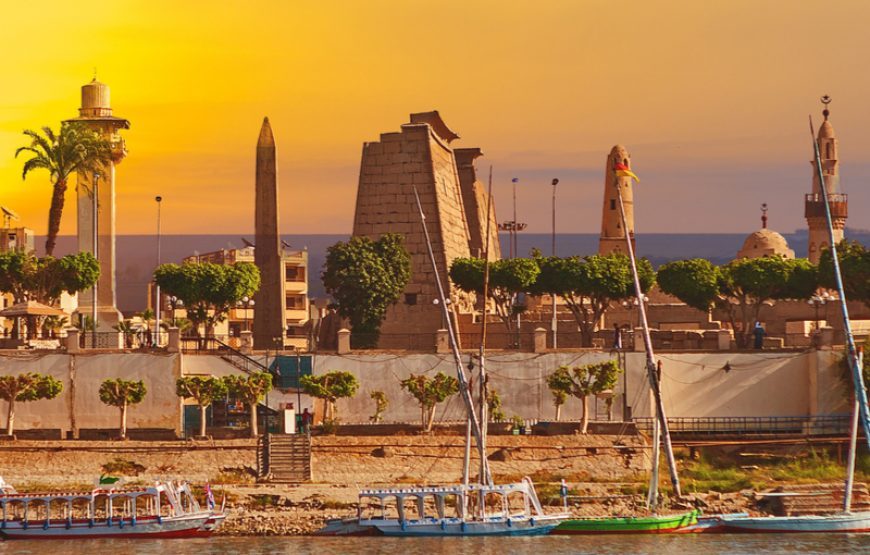Early in the morning, after your breakfast, we start our Luxor West Bank tour from your accommodation in Luxor or your Nile cruise ship with the trip to the
Habu Temple
The remarkable Habu Temple on Luxor West Bank, built by Ramses III in Medinet Habu, tells on its walls and columns in beautifully preserved reliefs the story of its builder with his battles and victory against Libyan tribes and several sea peoples.
During the reign of Ramses III was the first workers strike in history, the strike in Deir el-Medina, in which workers stopped the construction work on his greave because of poor supply.
After entering the inside of the temple, you will notice that excavations are still taking place to this day to restore the temple to its original state. A church from 1859 and some houses in other parts of the temple complex, were removed in 1891. The temple walls of the Habu Temple offered protection for the residents, but after they left the village, the demolition work began to restore the Habu Temple to its original condition.
Let our experienced Egyptologist explain the wall drawings to you before we set off to the next stop on our Luxor West Bank tour, the world-famous Valley of the Kings or the Valley of the Queens. Did you decide to visit the Valley of the Kings?
The Valley of the Kings is located in a valley that was cut deep into the rocks. The pharaohs had their tombs built in the shelter of these massive walls to protect them from grave robber. Unfortunately, several tombs fell victim to grave robbers. These tombs were robbed even before archaeologists discovered them. On our way to the Valley of the Kings, you can see some holes in the rocks, caused by grave robbers that searched for some tomb burial goods.
Valley of the Kings
After reaching the Valley of the Kings, we take a small train to continue our way up to the actual entrance. With your entrance ticket, you can choose which 3 tombs you would like to visit (a visit to the world-famous Tutankhamun tomb with its mummy is not included in the entrance fee).
Our experienced archaeologist will be happy to help you choose the 3 most impressive tombs. As you enter the individual graves in the Valley of the Kings, you will come across wonderfully preserved paintings on the walls. To everyone's astonishment, even most of the colors are perfectly preserved to this time. In each grave, the wall paintings tell the story of the individual pharaoh, and the tomb guard will be happy to give you some more information.
Our alternative leads you to the
Valley of the Queens
The Valley of the Queens, also called Ta Set Neferu (Place of Beauty), is located in a valley that extends from east to west in the Thebes Mountains directly behind Medinet Habu and not as hidden as the Valley of the Kings and easy to access. Already the entrance of the necropolis shows images of goddess Hathor (in human form and cow form). That indicates, that the location of the necropolis creates a connection to the goddess Hathor, patron of the grottoes. During heavy rainfall, a waterfall forms and is caught by the grotto.
Like the Valley of the Kings, this necropolis was added to the list UNESCO world heritage site in 1979. The name "Valley of the Queens" is a bit misleading, as the 90 graves are not only tombs of queens but also nobles. Most of these tombs do not have intense wall paintings like the one in the Valley of the Kings, apart from the famous tomb of Nefertari with its beautiful drawings.
All of these tombs cast a spell over their visitors and are fascinating in their way. After you got an impression of how the Egyptians buried their pharaohs, we make our way back to your accommodation in Luxor or the Nile cruise ship.






